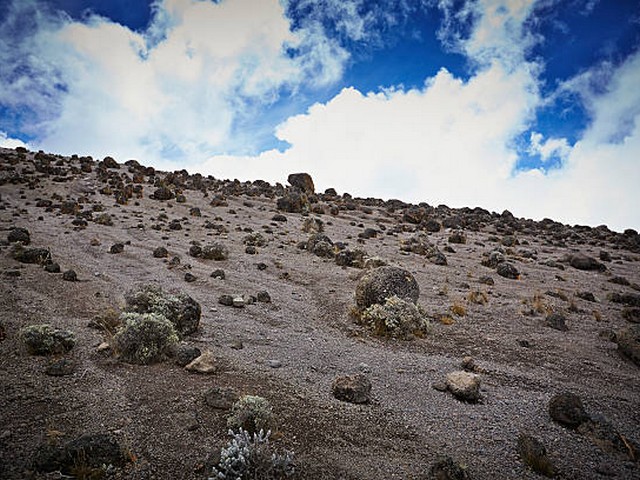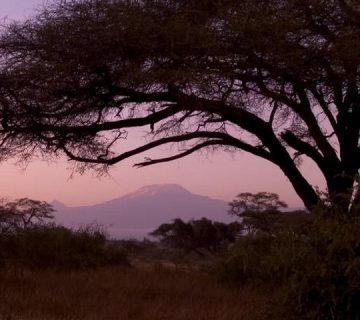How to Train for Kilimanjaro Climb: Your Ultimate Guide to Conquering the Roof of Africa
Climbing Mount Kilimanjaro is a dream for many adventurers around the world. Standing at a majestic 5,895 meters (19,341 feet), Kilimanjaro is not just the highest peak in Africa but also the highest free-standing mountain in the world. It’s a beacon for trekkers who come to Tanzania to achieve the feat of standing atop its snowy summit. But before you can relish the sunrise from Uhuru Peak, there’s something crucial that beckons—training. Preparing for the Kilimanjaro climb is paramount, and here at the Kilimanjaro Centre for Trekking and Ecotourism (KCTE), we want to guide you through this exhilarating process.
Preparing Your Mind and Body for the Journey
Understanding What You’re Up Against
Kilimanjaro’s magnificence is matched by its challenge. Despite being a "walkable mountain," meaning no technical climbing skills are required, the trek involves long walking days, steep trails, and the daunting altitude. Understanding the physical and mental demands will help you frame your training correctly.
Physical Fitness: A Pillar of Your Training Regime
The journey to Kilimanjaro’s peak demands cardiovascular strength, endurance, and mental grit. Tailoring a fitness program that includes aerobic exercises, strength training, and hiking practice is essential. Start training at least six months before your climb to gradually build up your stamina and resilience.
Cardiovascular Training
Begin with activities that increase your heart rate and improve your lung capacity. Cycling, running, and swimming are fantastic ways to boost your cardiovascular health. Aim for at least 30-45 minutes of cardio, three to four times a week.
Strength Training
Kilimanjaro’s trek will test your legs, shoulders, and back. Integrating strength training into your routine will help you endure the physical demands of climbing. Focus on squats, lunges, planks, and deadlifts. Don’t forget to strengthen your core, which plays a crucial role in hiking.
Practice Hikes
There’s no better preparation than simulating the actual experience. Engage in frequent hikes, progressively adding weight to your backpack. These practice hikes not only build muscle but also acclimatize your body to long durations of walking, particularly on varied terrains.
Mental Preparation
Mental endurance is as important as physical training. Climbing Kilimanjaro will test your patience, perseverance, and ability to overcome discomfort. Engage in activities that enhance your mental toughness. Meditation and visualization techniques can be incredibly beneficial.
Nutritional Strategies for High-Altitude Trekking
Fuelling Your Ascent
The right nutrition can significantly impact your performance and enjoyment during the climb. High-carbohydrate diets are advantageous, as carbs are an excellent source of energy. Incorporate a balance of proteins and healthy fats to support muscle recovery and overall health.
Hydration is Key
Altitude can lead to dehydration quicker than you might expect. Increasing your water intake prior to and during the climb is crucial. Aim to drink at least 3-4 liters of water daily during the climb to maintain optimal hydration.
Gear and Equipment: Dressing for Success
Choosing the Right Gear
The weather on Mount Kilimanjaro can be highly variable, ranging from warm tropical temperatures at the base to below freezing conditions at the summit. Investing in quality layered clothing, a durable backpack, a comfortable sleeping bag rated for low temperatures, and sturdy hiking boots is essential.
Technical Equipment
While Kilimanjaro does not require technical climbing gear, having trekking poles can be a game-changer. They reduce the impact on your knees and aid in balance.
The Role of Acclimatization in Your Training Plan
Understanding Altitude Sickness
Altitude sickness is a real concern when climbing Kilimanjaro. It can affect anyone, irrespective of fitness levels. Symptoms include headache, nausea, and dizziness. Including altitude training, which can be simulated through specific gear or training at high altitudes, can be beneficial.
Choosing the Right Route for Acclimatization
At KCTE, we recommend routes that allow gradual acclimatization. The Lemosho and Machame routes are excellent options, providing a slower ascent and higher success rates.
Join Us at Kilimanjaro Centre for Trekking and Ecotourism (KCTE)
Ready to embark on this life-changing adventure? Join us at KCTE, where we not only provide expert guidance but also ensure an ecologically responsible approach to trekking. Our experienced guides and comprehensive support systems are geared towards making your Kilimanjaro journey unforgettable.
FAQs
Q1: How long does it take to train for Kilimanjaro?
A1: Ideally, start training at least six months before your planned climb to gradually build up your fitness and endurance.
Q2: What is the best time of year to climb Kilimanjaro?
A2: The best times are during the dry months, particularly January to March and June to October.
Q3: Can beginners climb Kilimanjaro?
A3: Yes, beginners can climb Kilimanjaro; however, adequate training and preparation are crucial for a successful summit.
Q4: How do I prevent altitude sickness?
A4: Proper acclimatization, hydration, and a slow ascent pace are key strategies to prevent altitude sickness.
Q5: Why should I choose KCTE for my Kilimanjaro climb?
A5: KCTE offers experienced guides, custom-tailored treks, and a commitment to safety and environmental sustainability, ensuring a rewarding and responsible trekking experience.
Conclusion: Your Summit Awaits!
Training for Kilimanjaro is an adventure in itself—a journey of building strength, endurance, and character. At KCTE, we are excited to be part of your journey to the roof of Africa. Remember, every step you take towards training for Kilimanjaro brings you one step closer to the clouds. So gear up, train hard, and let’s make your dream of conquering Kilimanjaro a reality.
Book your Kilimanjaro climb with Kilimanjaro Centre for Trekking and Ecotourism (KCTE) today, and step into the adventure that awaits!




